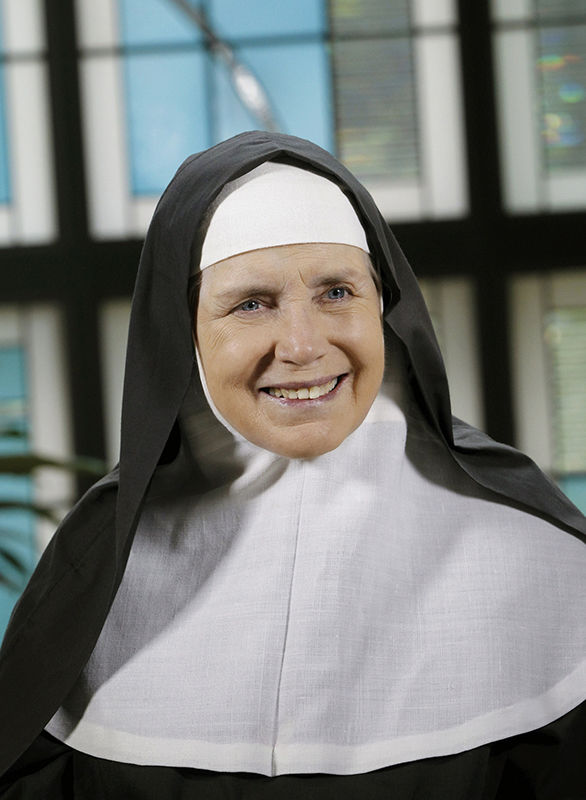A 2016 news article about a cloistered nun who just earned her Ph.D. in aerospace engineering got me thinking about a Hollywood actress from the early 1960s, a terrible Alan Alda movie from the 1970s and the challenge of tying all these seemingly disparate elements into one cohesive thought.
In regard to the cloistered nun earning her advanced degree, I couldn’t earn something like that if I had Stephen Hawking taking the tests for me. To think that someone with the added challenge of living the cloistered life with all the praying and duties that life entails, accomplishing such an academic feat is truly a touch of the divine. The icing on the cake is that a seemingly archaic and outmoded “lifestyle” behind a cloistered wall can at the same time be married to the cutting edge scientific advancement of aerospace engineering. It’s that faith and reason thing why the Church has, for the most part, done oh so well.
Reading the current story about this remarkable woman made me think of another remarkable woman, a woman who, like the freshly minted Ph.D., entered into cloistered life. What made this woman’s story so noteworthy was from whence she came.
Dolores Hart was a classic late 1950s/early 1960s ingénue. She starred in a string of forgettable light movie comedies and was featured in a couple of Elvis movies as well. She always played the “good” girl, which when you think about it, could easily be interpreted as God’s version of type casting. Dolores “shocked” the pop culture universe when she turned her back on Hollywood and all its empty promises in the middle of a New York publicity tour and entered into cloistered life at the Abbey of Regina Laudis in Connecticut in 1963.
Since 1970, Mother Dolores has been the dean of education at the Abbey. There have been books written about her. She wrote an autobiography, “The Ear of the Heart: An Actress’ Journey from Hollywood to Holy Vows.” She was the subject of a garishly named documentary called “God is Bigger than Elvis.” He was bigger than the Beatles too, as John Lennon found out. There was another dramatis personae in Mother Dolores’ story line though, and it is an arc that got me thinking about a perfectly awful Alan Alda movie from the 1970s.
The movie was called “Same Time Next Year” and, basically, it was an ode to adultery. The plot, based on a play of the same name, was that a man and woman have a one-night fling and then decide to meet on the anniversary of that fateful day for the next 20 or so years. Of course, there is lip service given to the concept that what these two consenting adults is doing is morally questionable, but the thrust of the plot and the development of their characters over imaginary decades certainly falls on the side of their “life choices” as basically good.
I know we’re supposed to be evolved and not be “shocked” by something as old fashioned as what King David did in the Old Testament, but that premise, along with a lot of self-satisfied writing in the script, just turned me off.
Now you’re asking yourself, at least I hope you’re asking yourself: Just what in the world does the story structure of a forgettable film have to do with Mother Dolores (nee Dolores Hart) in her abbey in Connecticut.
It has a lot to do with a man who was in love with Dolores Hart. They were very close to being married by all accounts when Dolores was overwhelmed by a call to a religious vocation. This man was devoted to her in a way that seems lost to our culture now. He was also a man who ran smack in front of a rival he was not equipped to compete with. How does a guy react when the girl he loves and intends to marry tells him “there’s somebody else” — and that somebody else is the Almighty.
Mother Dolores’ former fiancé Don Robinson did something almost as inspiring as a woman turning her back on riches and fame and entering into an intimate life-time contract with God. Twice a year, at Christmas and Easter, Don Robinson traveled to Connecticut and visited with the girl who he lost to God. He never married and, in a way, became part of her religious vocation and an example of love that today would be either diminished or even ridiculed.
Their love would be construed as odd and as unnatural as the adulterers in “Same Time Next Year” are viewed as empathetic and profound. Yet, the story of this love is actually a true positive and rather colorful image compared to the make-believe black-and-white negative image of the choices made in the forgettable Alan Alda movie.
Mother Dolores is rightfully famous because of her celebrity and her beautiful commitment to God. Don Robinson, who very few people even knew existed, also lived out a kind of vocation in support of Mother Dolores, in a way few people today understand, let alone honor. But Don faithfully visited her until his death in 2011. I wonder if after every parting they turned to each other and said, “Same time next year?”
Robert Brennan has been a professional writer for more than 30 years, including many years in the television industry.

